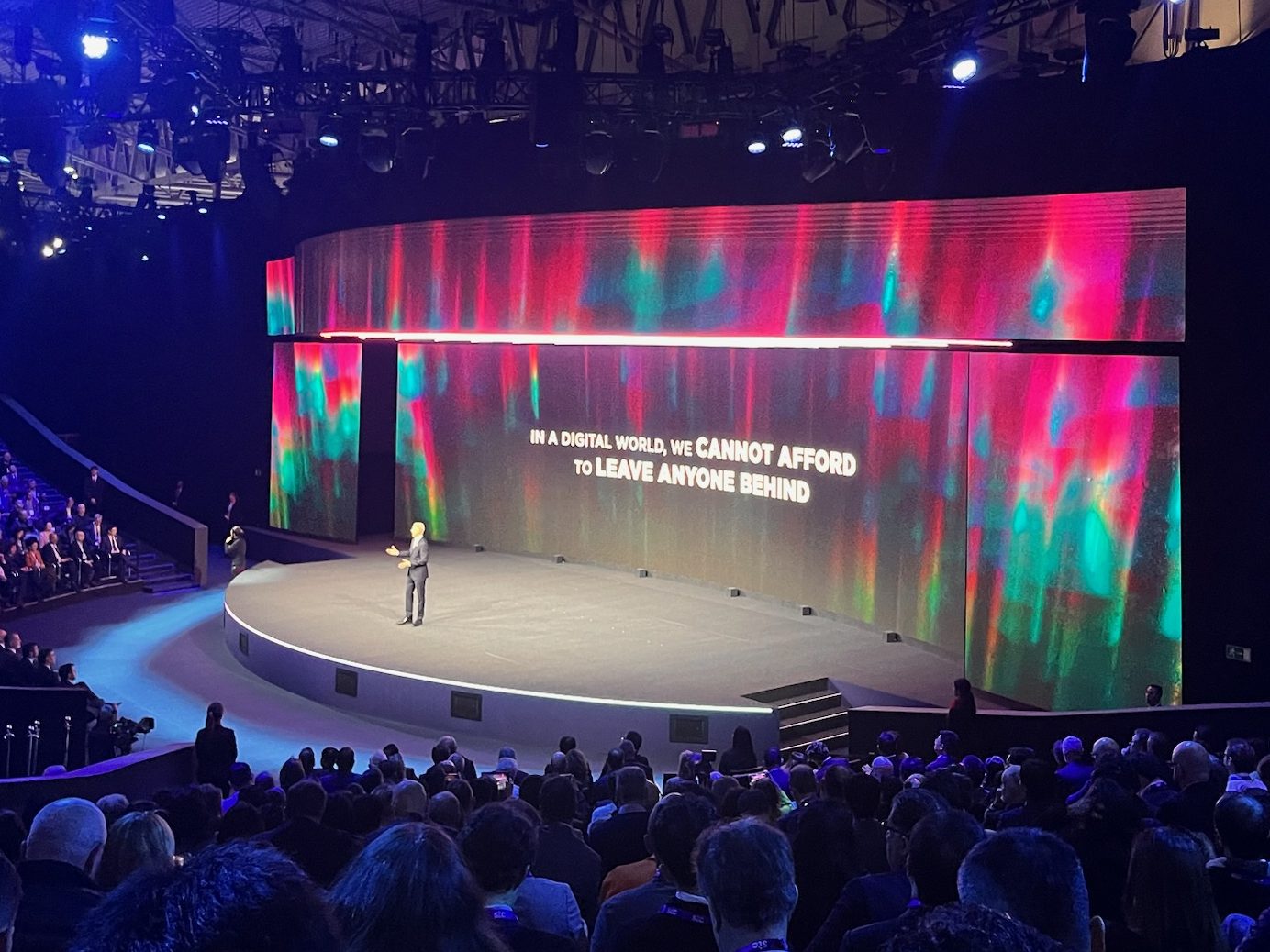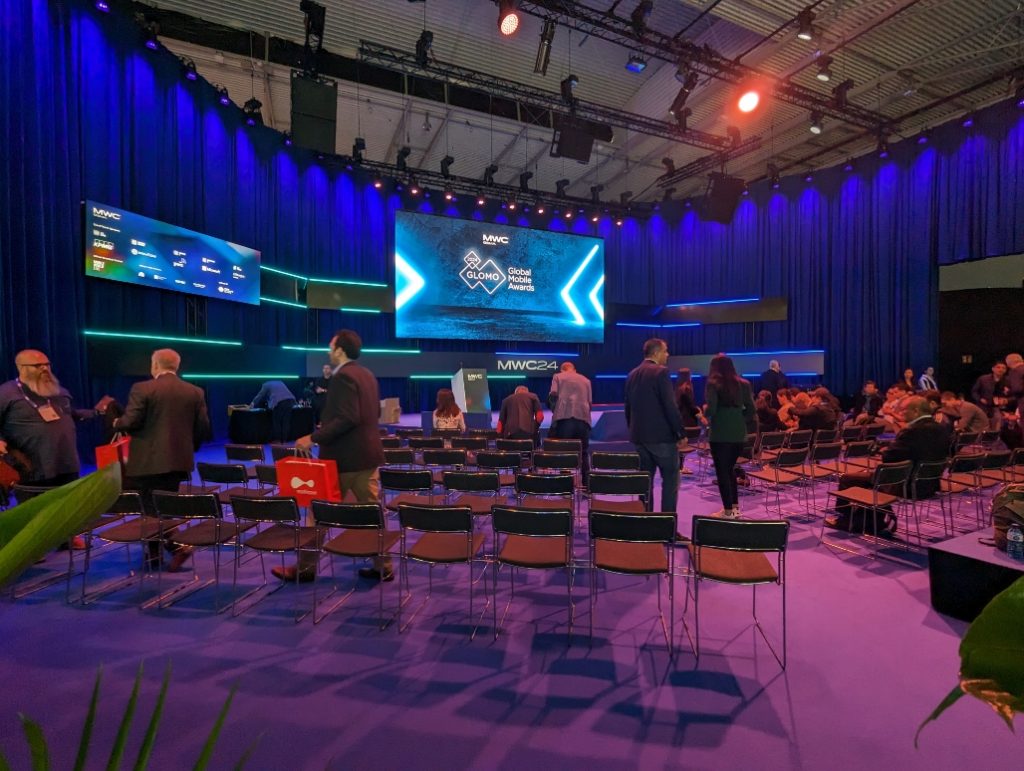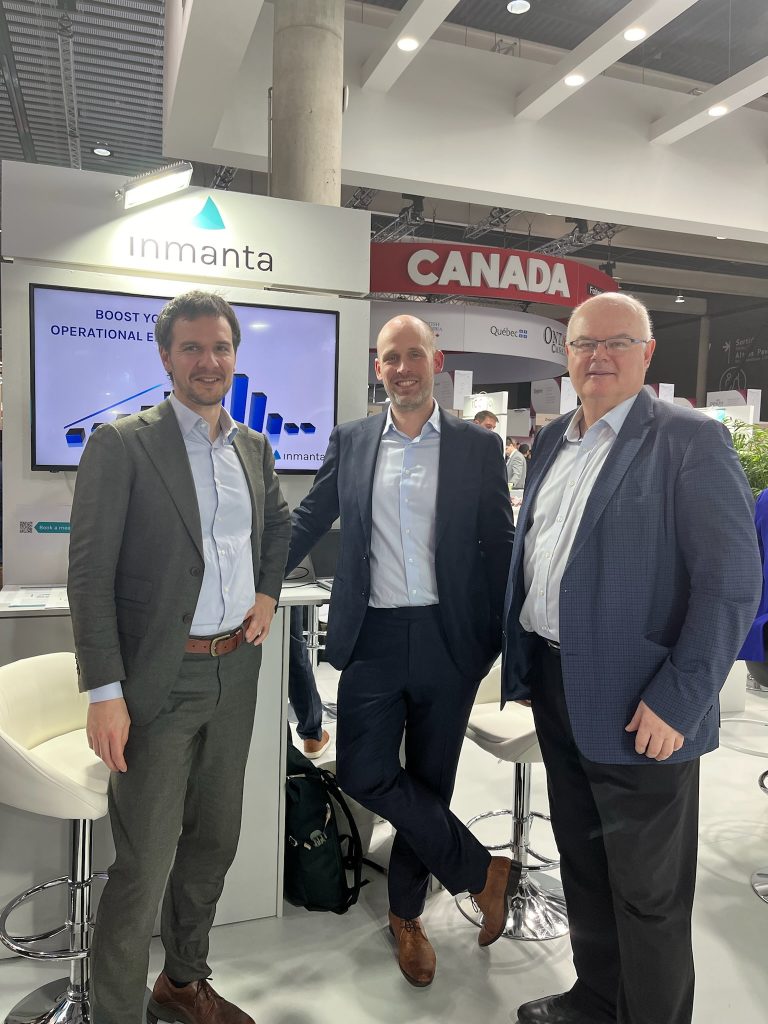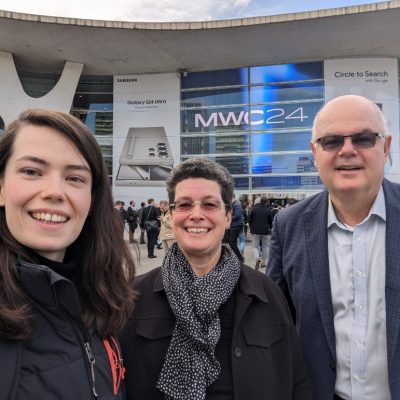Looking beyond the headlines, buzz and razzmatazz at the Mobile World Congress, Telecoms is one of the most important enablement technologies of modern society, which is sometimes taken for granted. As presented in the first keynote by José María Álvarez-Pallete the CEO of Telefónica, in 2023 5.4% of global GDP, e.g. $5.7 trillion of economic value was added by the Telecoms industry which is supporting 35 million jobs!
Although 69% of the world population subscribes to mobile services, 31% of the world’s population do not and not all out of choice. Whichever way you spin it, this represents a considerable and material gap between the connected and unconnected, which has a direct bearing on living standards and national GDP. The principle of leaving no one behind is laudable but there is still a lot more work to be done.

58% of the mobile subscribers use mobile internet (4.7b users) and the published number of 1.5b related to 5G is in my view flattering, as most of them are on 5G NR, which means the radio is 5G, but not the core so is not in my view true 5G. To take advantage of what 5G can deliver, which is the capability to optimise the network to support specific use cases, you also need a 5G core. Another important factor is the cost of devices. 5G smartphones now at price points under $99 make connectivity easier.
It was good the attendance of MWC returned to pre-pandemic levels with around 101k visitors and 2700 exhibitors across MWC and 4YFN. There were no queues to get in due to everyone having to check in digitally via the app and the check-in gates had been moved in front of the Fira. With everyone having to use the app to find information it performed well. Small format maps were still an issue and given the overall ambition of connecting the unconnected and GloMos, “Tech for Good” should be a search term in the app when looking for companies.

Barcelona has good transport links and a quaint old town and port worth a visit. One thing that needs to be addressed in Barcelona is pickpocketing which is out of control. My wife was pickpocketed from her bag, luckily nothing more valuable than clothing, we heard much worse from others.
One thing for sure is that Telecoms is changing rapidly, and this is accelerating as the established ways of delivering services are put under pressure from all sides. This includes by regulators, hyper-scalers, investors, businesses, and consumers, allowing windows of opportunity for new ideas companies, systems and solutions to emerge.
The GSMA opening keynote was titled “Open Gateway – The Art of the Possible” which was upbeat. Recognising that Telecoms is now a team sport, what Mats Granryd dubbed “the great explorers for tomorrow” with the acronym GOAL Growth, Open Gateway, Align, Leave no one behind. China and China Mobile are now pushing 5.5G or 5G Advanced in the B2B area and José María the Telefónica CEO mentioned a new partnership between Cloud and Earth with the idea of providing Earth as a service with 4 times traffic growth expected in the next 7 years. It was also highlighted how power-hungry AI can be, with one AI query consuming the energy of a lightbulb being on for 2 hours. It is also clear that Telecoms are keen to see resources shared fairly noting that 6 companies currently generate 50% of the internet traffic. Is that sustainable and equitable?
It might have been lost in translation, but the presentation of the CEO of China Mobile did indicate that “new” species is the natural progression of AI which reminded me of science fiction films such as Robocop’s. Should this really be what humanity is aspiring to? China and China Mobile were keen to promote that they were already pushing ahead and delivering 5.5G but were muted on the topic of 6G.
Unlike the big analyst firms, I did not spend much time on the big vendor booths where there seems to be a consensus that AI is the big hype for this year claiming that it fixes all those things from the past and suggests it sweeps long-standing issues under the carpet. With GTP 4.0, we are all now more aware of AI, but having said that, the main generative AI use cases are not related to telecoms specifically and could apply to other industries. Most telecoms-specific AI is related to machine learning which is not new and has been around for several years. The elephant in the room is the quality and consistency of the data. Because this has been too challenging for Operators to solve, they hoped hyper-scalers could solve this challenge, but at what price?
The other topic grabbing the headlines are APIs and the Telco Open API initiative CAMARA. By exposing the network through APIs, you also allow a high degree of programmability and the opportunity of monetisation of their next-generation networks, which is what Operators aspire to leverage, to recoup the billions of dollars of investment in their networks.
Due to my work with Inmanta in the service orchestration area, I think it is worth taking a reality check on both AI and APIs. Talking to real engineers on the ground, especially related to B2B, the data is either not available or inconsistent. As part of the exercise to make the network ready, you need inventory and consistent metadata and a unified point of truth. Why is this important? Without clear and clean data, you can’t automate and expose useable APIs and automation goes hand in hand with AI. The best way to approach this is to take an iterative approach which we at Inmanta would be glad to discuss with you.

Staying with the topic of AI, one of the interesting remarks at the closing wrap-up session by one analyst was that if as a CTO you’re trying to obtain a budget, whatever you do you should make sure that AI is part of the business rationale. It reminds me of a similar strategy that was previously used in 5G deployments where the project funds were craftily used to fix and update older kits as part of the projects.
One area where AI could be used was demonstrated by Deutsche Telekom as the user interface to replace conventional apps. The handset is a concept currently called “T-phone” developed together with Qualcomm. The embedded interface is powered by Brain Technologies which one could best describe as a large action model rather than a large language model. As a user interface you just need to provide the prompt and then via the interface answers and recommendations are served and the next actions are displayed dynamically. This is in my view an appealing concept presented as part of Tim Höttges Telecoms speech “The Digital Vision of Telcos”.
As an industry, we are quick to forget. I distinctly remember last year one of the big questions which was unanswered was whether O-RAN would be a breakthrough technology. This seems to have been skirted over by the main analysts however, there is clear intent and there are now contracts in place to deliver O-RAN. A case in point is the contract between Ericsson which is the largest deal ever to deliver O-RAN to AT&T. Vodafone is also pushing ahead with an RFP to swap out of over 170,000 RAN sites across the group. O-RAN is also being successfully deployed across the globe including NTT Docomo Japan. With this being an open standard, there are now several noticeable labs to help vendors to pre-integrate, test and verify their solutions including https://www.digicatapult.org.uk, https://www.i14y-lab.com and https://eantc.de. To try and convince the cynical and sceptical, Vodafone shared the test results of working with various O-RAN vendors as part of their display.
We also have a tendency in the industry to act as if something has been ever present when in fact it is still relatively new. The case in point is what I in the broadest term would call propeller-driven drones, either controlled from the ground or flown by people. Alef is developing a car which has been given FAA clearance in the USA and will be in production in the next 2 years with a range of 110 miles flying or 200 miles on the road. Will we have police now in the skies as well?
My prediction is that in the next 10 years, drones will be commonplace, and people will have a touch point in their lives where they see drones being used. We’ve been able to see the effectiveness of them on the battlefield in Ukraine, but more positive use cases include transport, emergency services, search and rescue, security and transport. I can imagine a new industry where a network of drone ports is being established at key places in urban and rural areas to support the rapid dispatch of goods and equipment potentially replacing some of the work that couriers currently do on motorbikes. And don’t forget those who will have one at home to impress their dinner guests.
It is also refreshing to see Operators wanting to lead and set the agenda. It was announced that Deutsche Telekom, e&, Singtel, SK Telecom and SoftBank have launched a Global Telco AI Alliance which is focusing on developing LLM specifically for telecommunication companies.
Another observation regarding operators is that modern leaders need to be media savvy, with an image of being a cool geek in jeans and trainers. Being able to deliver speeches fluently and confidently as you might expect at a TED-X presentation. Tim Höttges carries this persona off well as demonstrated in the keynote about how DT is using AI in seven places in the business. He thinks the use of AI needs to be a topic managed by the CEOs to allow it to be embraced but also ensure guard rails and their ethical use in business are embedded in the organisation’s cultural values.

Perhaps it’s the fact that satellite and HAPS are seen as non-terrestrial networks and therefore a different domain to telecom operators, but this is the area where I think the next generation of connectivity will dominate. The fact remains that through terrestrial connectivity you’re only covering about 10% of the world’s surface and the cost of servicing people outside of urban areas terrestrially is excessively expensive compared to servicing them from above. This is a developing area and will just become part of the established landscape.
Despite some pessimism from some analysts about 5G, I think we still have a long way to go in exploring the capabilities this technology offers in its purest sense. It’s worth noting at this point that Operators themselves are only predicted to capture 15% of the MPN 5G market. Having focused more on the smaller vendors I see an ecosystem building of companies which are going to be able to provide cost-effective 5G SA solutions to the market to address the needs of small and medium-sized enterprises. We must be realistic that the price point needs to be comparable to Wi-Fi deployment plus the added value that a single-technology solution covers a larger area.
One point I want to take issue with within the final wrap-up session is the notion that ESIM has not yet proven itself. In the area of MVNOs, this has been an absolute game changer and is also of huge importance in being able to deliver IoT effectively. It is also the only way of delivering an e2e digital onboarding experience that consumers just expect, let alone considering the savings on logistics and environmental waste. I know that operators have been resisting the ESIM as they believe it will make it easier for customers to leave and churn without them having contact.
Subscriber management (SIM) which is fundamentally what an ESIM delivers, is also evolving at a pace as people will be moving in and out of public and private networks across wireless and Wi-Fi technologies. There are companies already creating a seamless handover based on unique subscriber profiles which enhances the user experience.
This post would not be complete without also mentioning Quantum. It is important and will become fundamental in delivering secure telecoms in the future. This topic will only grow in importance for everyone, in and outside of Telco.
Starting with bling and ending with bling, Motorola and Samsung were displaying bendy mobile handsets which you could wrap around to have a fully curved screen. I can see users wearing this as a novelty, but the more practical use would be related to signage and advertising.
I would like to thank you for reading this post and look forward to discovering what’s next in the coming years.
By Ian Ginn

